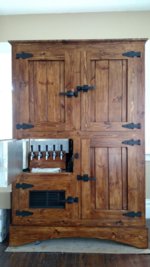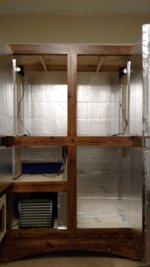When I do all grain brewing, I use a 10 gallon round cooler, like the orange or blue ones you can get from Home Depot or Lowe’s. There are companies out there that make false bottoms to fit these mash tun coolers. They are about the ideal size to do a 5 gallon batch. I think the biggest beer I mad in mine was a Russian Imperial Stout that had 20+ pounds of grain in it.
I didn’t do too much with rinsing the grains. I basically did a batch sparge. At the time, I had a subscription to the Beersmith software and that made it super easy to figure out your recipes and amount of sparge water. I would preheat the water in the cooler with a 1500W immersion heater, dough in the grains, hold at the desired temp for 60 to 90 minutes, drain the wort, dump in all the sparge water, stir, let sit a few minutes, and then drain again and start the boil. I was able to hit 75 to 80% efficiency with that method and not a lot of expensive equipment was needed.
Brewing beer isn’t difficult and you can make a nice beer with minimal equipment. You can also get super fancy with it and spend tons of money. I think the most important topics are temperature and PH. Sanitation is also up there, but I never had any infections so it was as easy a spraying with Star San for me. The PH during mashing is important for the alpha and beta Amylase to do their job of converting the starches to sugars. You can vary the mash temp to produce more or less unfermentable sugars. PH is also important during fermentation to keep the yeast happy, but I think temperature during fermentation is more important. Push the yeast too hard by being too hot or cold can produce some off flavors.
I never bought any books on the subject, just searched the internet when I ran into issues. Making beer can be as simple or as complex as you make it. I built a big cabinet that serves as a kegerator and a fermentation chamber. It can hold 6 five gallon kegs, has 5 taps, and heating and cooling in the upper fermentation chamber. when I had it up and running I used a RaspberryPi and a couple Arduino boards to control each chamber. Cooling came from a refrigeration unit from a vending machine.
View attachment 48626
View attachment 48627View attachment 48628





